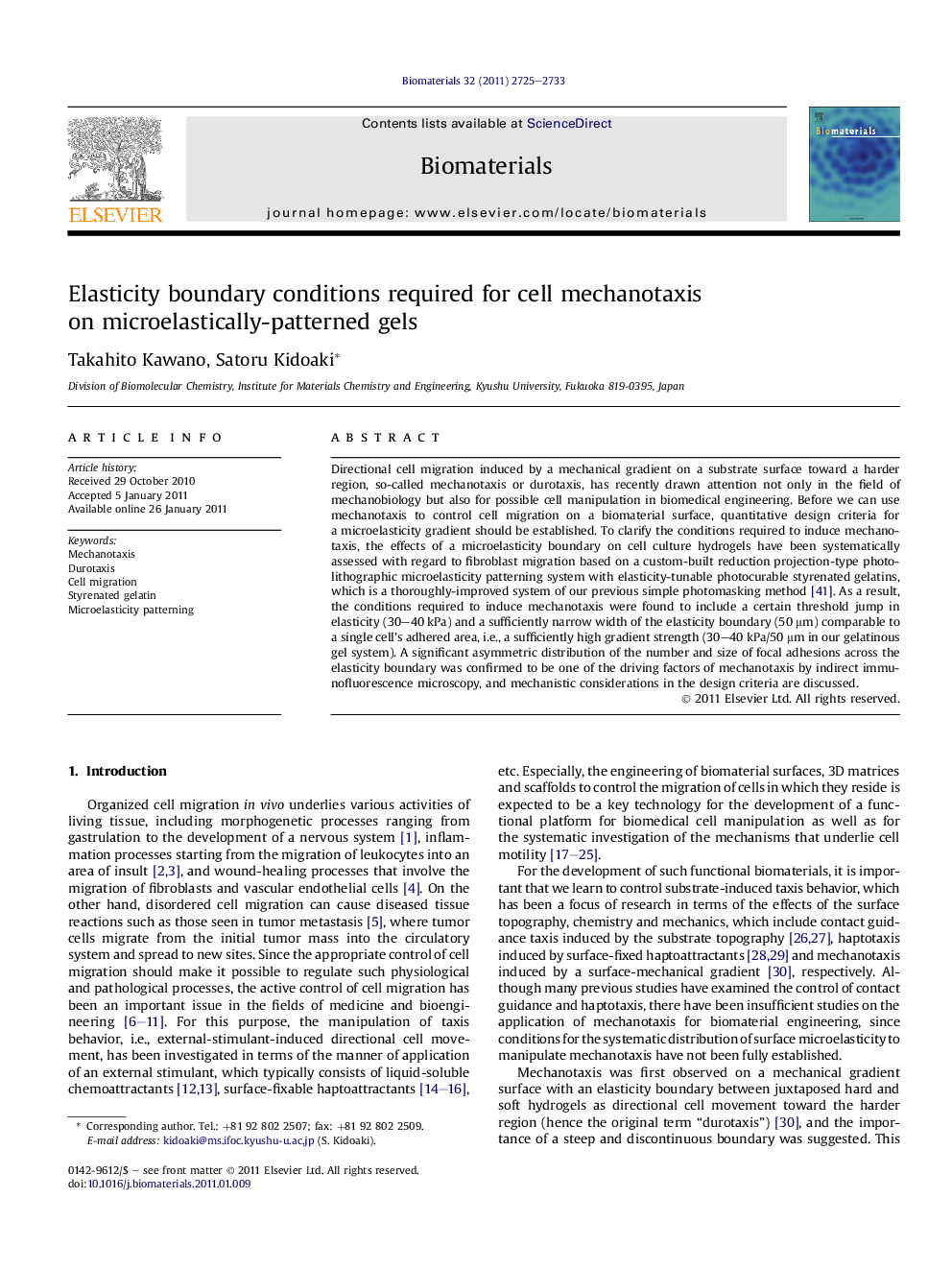| Article ID | Journal | Published Year | Pages | File Type |
|---|---|---|---|---|
| 10229620 | Biomaterials | 2011 | 9 Pages |
Abstract
Directional cell migration induced by a mechanical gradient on a substrate surface toward a harder region, so-called mechanotaxis or durotaxis, has recently drawn attention not only in the field of mechanobiology but also for possible cell manipulation in biomedical engineering. Before we can use mechanotaxis to control cell migration on a biomaterial surface, quantitative design criteria for a microelasticity gradient should be established. To clarify the conditions required to induce mechanotaxis, the effects of a microelasticity boundary on cell culture hydrogels have been systematically assessed with regard to fibroblast migration based on a custom-built reduction projection-type photolithographic microelasticity patterning system with elasticity-tunable photocurable styrenated gelatins, which is a thoroughly-improved system of our previous simple photomasking method [41]. As a result, the conditions required to induce mechanotaxis were found to include a certain threshold jump in elasticity (30-40 kPa) and a sufficiently narrow width of the elasticity boundary (50 μm) comparable to a single cell's adhered area, i.e., a sufficiently high gradient strength (30-40 kPa/50 μm in our gelatinous gel system). A significant asymmetric distribution of the number and size of focal adhesions across the elasticity boundary was confirmed to be one of the driving factors of mechanotaxis by indirect immunofluorescence microscopy, and mechanistic considerations in the design criteria are discussed.
Keywords
Related Topics
Physical Sciences and Engineering
Chemical Engineering
Bioengineering
Authors
Takahito Kawano, Satoru Kidoaki,
